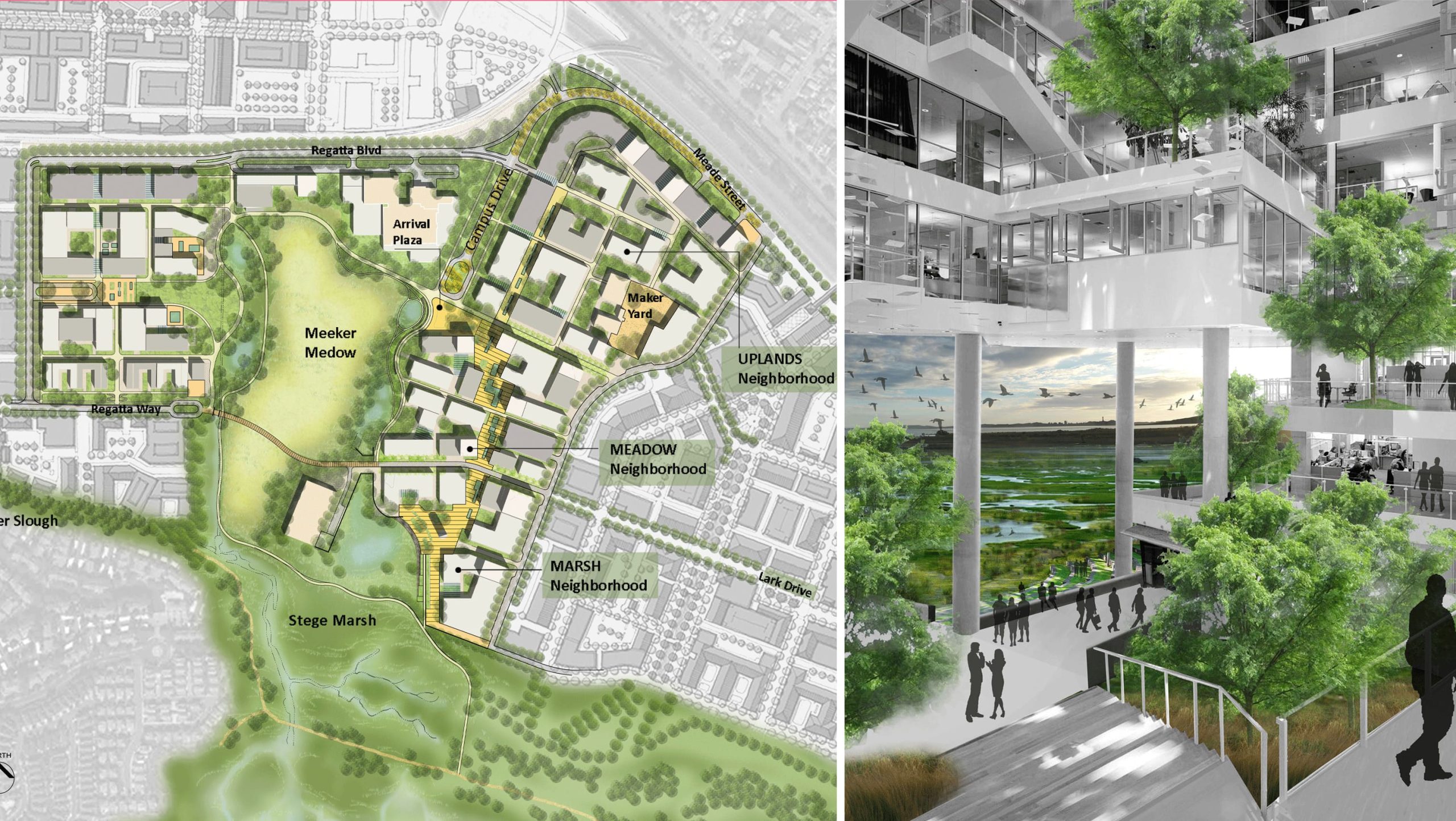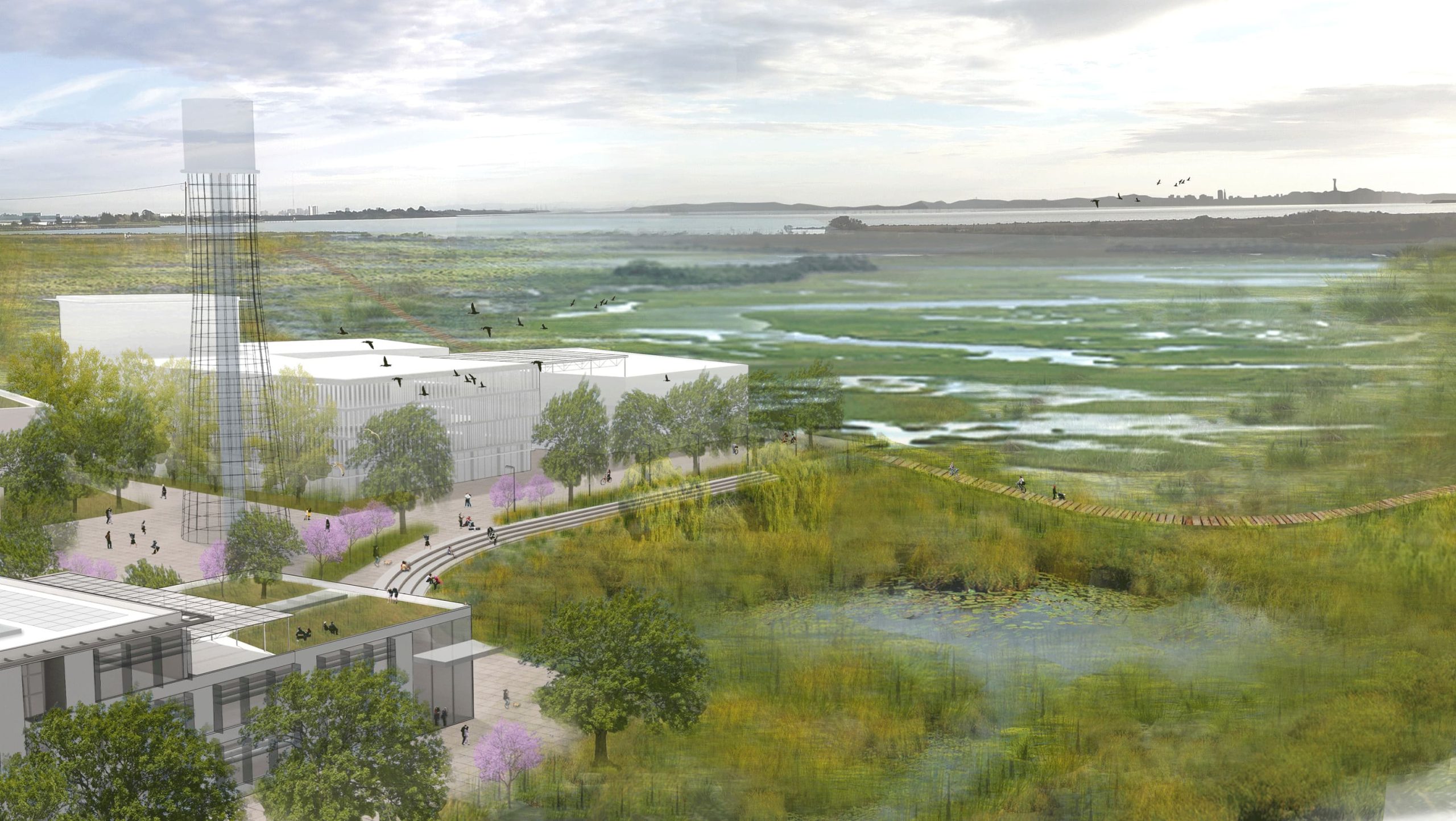The Berkeley Global Campus at Richmond Bay was conceived as a 10,000-person University of California Research and Education Center on San Francisco Bay. Daniela, as part of John Northmore Roberts & Associates, collaborated with Siegel & Strain Architects to create one of five finalist proposals in an international ‘Ideas Competition’ for the campus master plan.
Their innovative 5.4 million square foot design featured an urban academic and research village on high ground, emphasizing ecological adaptability and seamless connection to Richmond. The plan incorporated sea level rise accommodation and habitat protection, extending from the bay to the campus core. A standout feature was the integration of wastewater treatment through wetland extensions, engaging with local bird habitats and native ecology.
This approach not only addressed environmental challenges but also aligned with the campus’s mission of tackling global issues, providing students with firsthand experience of positive environmental solutions. The design created a living laboratory that embodied the principles of experimentation, creativity, and ecological responsibility, making the physical campus an integral part of the educational experience.
Size
135 acres
Client
UC Berkeley
Team
JNRA (Landscape Architect)
Siegel & Strain (Architect)



The Berkeley Global Campus at Richmond Bay was conceived as a 10,000-person University of California Research and Education Center on San Francisco Bay. Daniela, as part of John Northmore Roberts & Associates, collaborated with Siegel & Strain Architects to create one of five finalist proposals in an international ‘Ideas Competition’ for the campus master plan.
Their innovative 5.4 million square foot design featured an urban academic and research village on high ground, emphasizing ecological adaptability and seamless connection to Richmond. The plan incorporated sea level rise accommodation and habitat protection, extending from the bay to the campus core. A standout feature was the integration of wastewater treatment through wetland extensions, engaging with local bird habitats and native ecology.
This approach not only addressed environmental challenges but also aligned with the campus’s mission of tackling global issues, providing students with firsthand experience of positive environmental solutions. The design created a living laboratory that embodied the principles of experimentation, creativity, and ecological responsibility, making the physical campus an integral part of the educational experience.
© All rights reserved WiLD LandArch